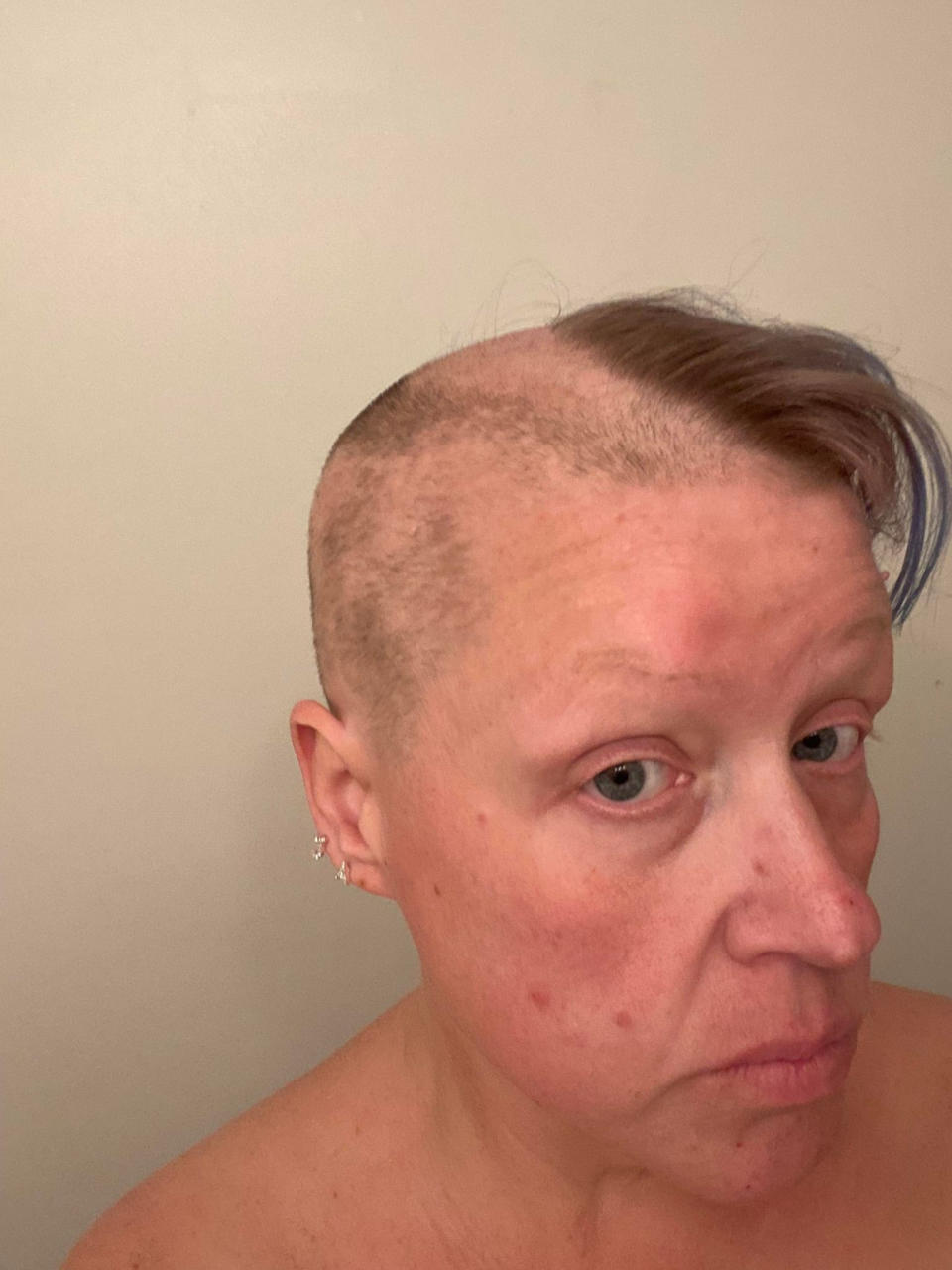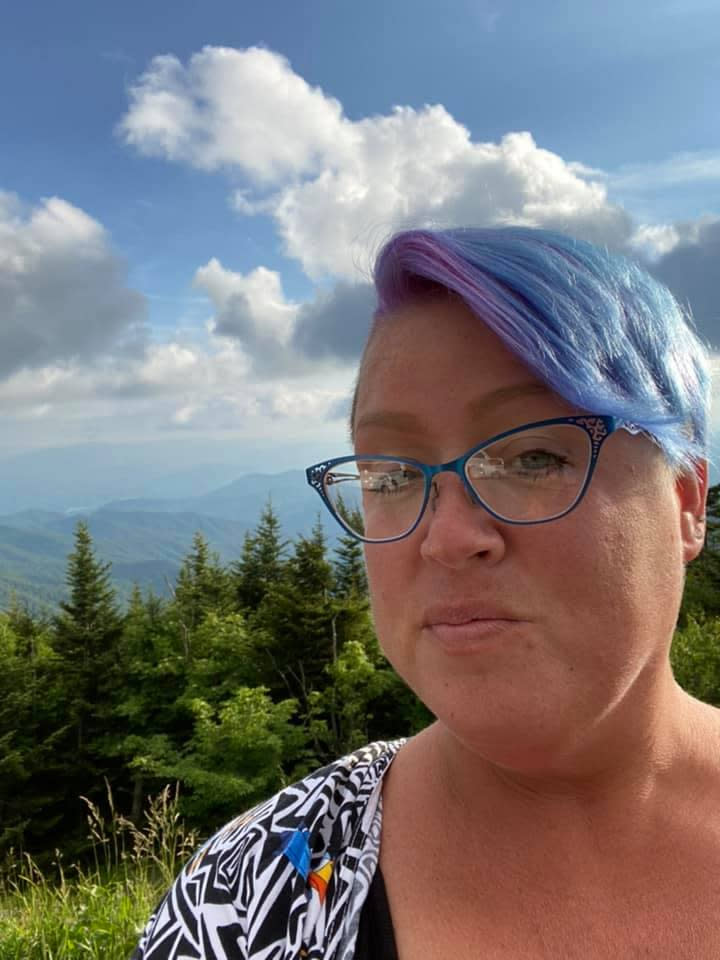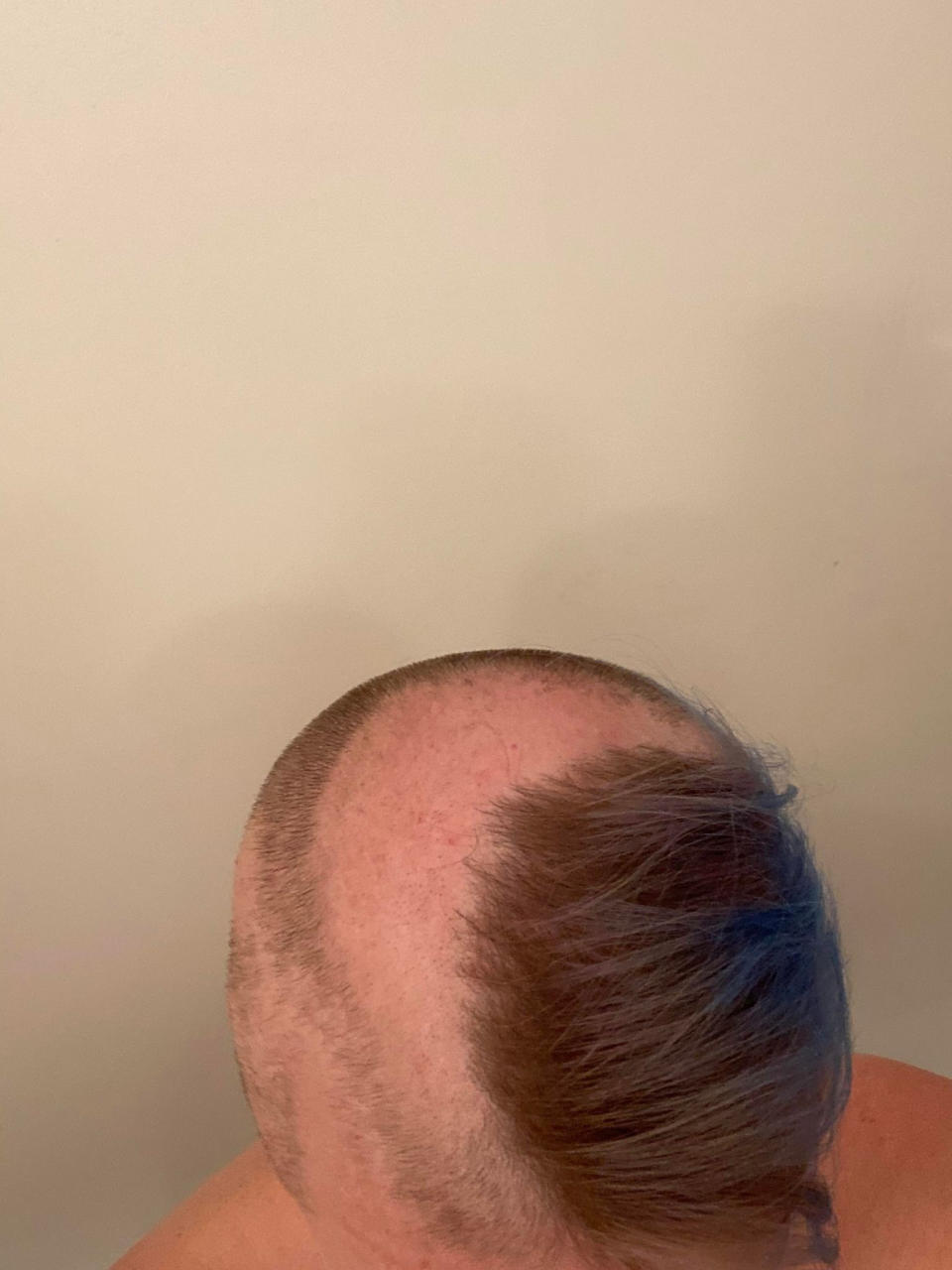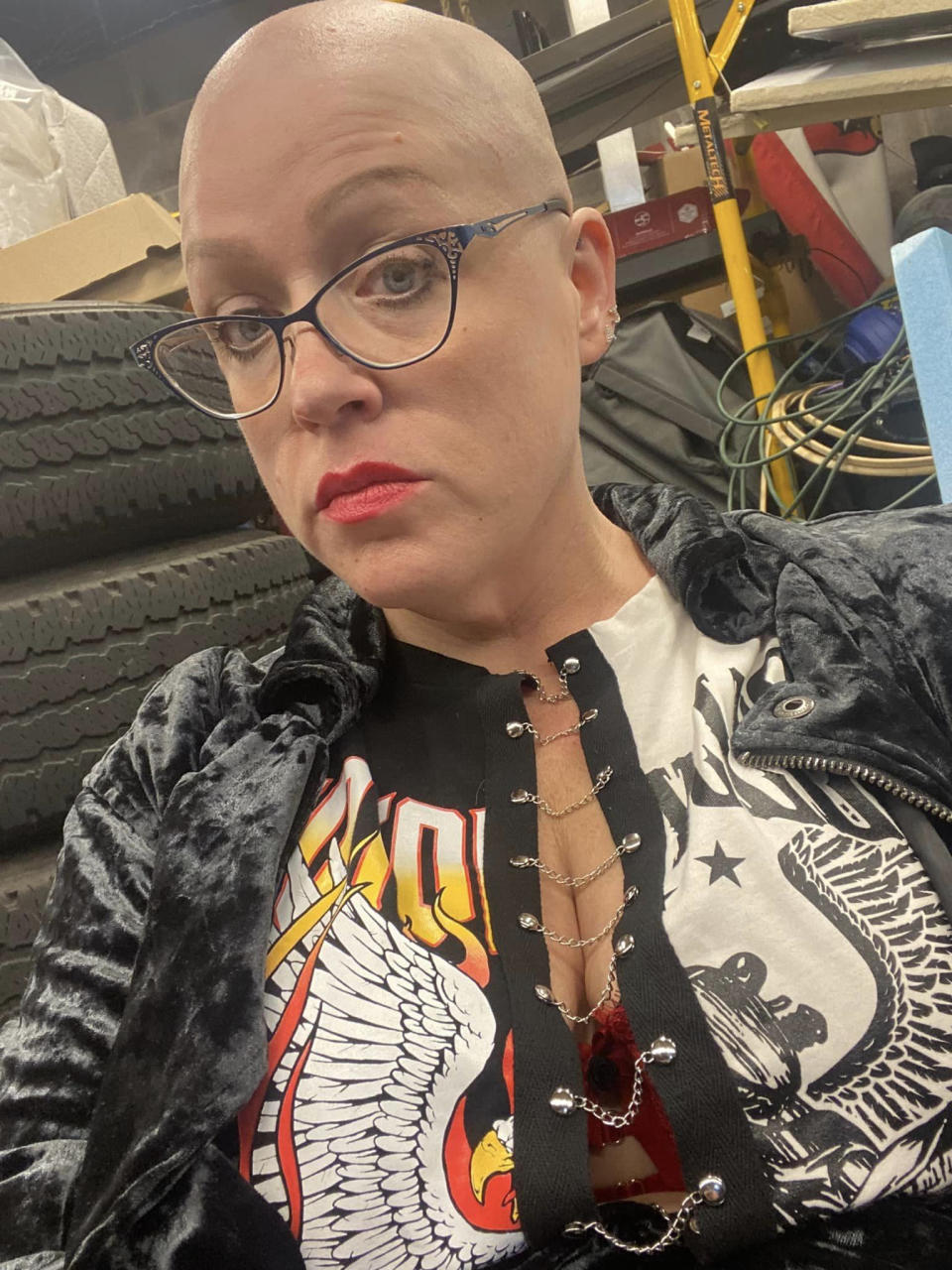Teacher with trichotillomania who spent hours a day pulling hairs now embracing new look as ‘bald, beautiful woman’
A special educational needs teacher whose condition caused her to spend hours a day pulling hairs from her scalp, leaving her with a bald patch and “a pile of hair next to the bed”, has shaved her head and is now embracing her new look as a “bold, bald, beautiful woman”.
Amanda Willoughby, 42, who lives in West Point, Kentucky, USA, has been living with trichotillomania – the urge to pull out hair from any part of the body, including the scalp, eyebrows and eyelashes – for more than three decades, but she was not officially diagnosed until her late 20s.

The mother-of-three cannot pinpoint an exact “trigger” for the condition, but she first started plucking her eyebrows and eyelashes, using tweezers and her fingers, when she was 11 – and although she initially experienced a “twinge of pain”, afterwards she felt a sense of “relief”.
She likened the sensation to a tattoo, saying: “It hurts, but you go and do it again,” and although she has found “distraction” techniques, such as decorating cakes and practising cosmetology, Amanda has continued “plucking” throughout her life, causing bald patches on various parts of her body and face.

This culminated in October 2022, where she ended up shaving her head due to pulling out too much hair – and although she was nervous about people’s reactions, she said she has received nothing but praise and wants to encourage others, including her students, to celebrate their individuality.
“I have more confidence about it now and, when people make (positive) comments about it, it makes you feel good because it’s different,” she said.

“Where I’m located, right now the kids (at school) are all about doing something that makes you stand out, that makes you an individual, and this is definitely standing out.”
Amanda explained that she first felt the urge to “pluck” when she was 11 after “a rough day”.

She used her mother’s tweezers to pull out her eyebrow hairs and said she felt an instant sense of “relief”.
“I guess I was probably in sixth grade or so, and I took the tweezers and I started plucking my eyebrows and, every time I would pluck, even though it’s a little pinprick of pain, it would almost be a relief,” she said.

“It was like, oh, I feel better, and then I would pluck and then I would feel better, and it was almost a release of anxiety.
“I didn’t realise that at the time, but that’s what it was.
“So, every time she would leave her tweezers out, then I would do it more and then eventually I just got my own pair of tweezers.”
This cyclical pattern of pulling out hairs to relieve tension and stress has continued throughout her life, and at one point one of Amanda’s friends said she looked like “a vulture because (she) had no eyebrows”.

Since Amanda has never been “a big make-up kind of person” and did not use mascara or eyebrow products in her younger years, she said she was unphased by the lack of hair and “shrugged off” any questions about why she had no eyelashes.
“People didn’t really say much,” she said.
“Every now and then, somebody would say, ‘You don’t have any eyelashes?’, and (I would say), ‘No, I don’t’, and kind of go on with it.”
But Amanda did experience low points; at times, she felt her “mania” – the word she uses to describe her condition – was taking over her life.

“I had a lot of low times, and then I would just be like, screw it, I’m taking it all off… so then I would just pluck everything,” Amanda explained.
“Then one of my friends would notice that everything was gone and they would say, ‘Hey, are you alright?’, and (I would say), ‘No, but it is what it is.”
Amanda explained that, for her, there was “always a reason to pluck”, and so it has been difficult to find a solution.

“It was like, well, this one’s white, or this one’s dark, or this one’s too short, or this one’s too long, or this one sits too close to the other one, and then before I knew it, I was completely bald on my eyebrows and eyelashes,” Amanda said.
According to the NHS, it is not entirely clear what causes trichotillomania, but for some people hair pulling can be a type of addiction.
Amanda has found ways to manage the condition, such as taking up cake decorating, studying and practising cosmetology, including waxing, as well as crochet and needlepoint, in order to “keep herself busy” and do “something with (her) hands”.

But in October 2022, after getting married, finding a new job, and moving house, Amanda said her stress levels were extremely high – and that is when she started using tweezers to pull the hairs from her scalp, sometimes spending hours at a time in the car or at home plucking.
“There were quite a few nights in a week’s span of time that I literally got no sleep at all because I would lay down to go to sleep and I would think, okay, I’m going to pluck just a little bit before (bed) to kind of relax,” she explained.

“Before I knew it, five hours had passed, and I would have a pile of hair next to the bed and it would be time to get up and go back to work.
“My husband, we were sitting watching television one day, and he looked over and he said, ‘Baby, I don’t want to make you feel bad, but your hair, what are you going to do about it, because it doesn’t match you anymore’.

“I started crying and I was like, ‘Does it look that bad?’, and he said, ‘Well, it just doesn’t look like you’, and so I told him, I said, ‘I just want to shave it off; I just want to shave it off and start over’.
“He said, ‘Well, shave it off.'”

With her husband’s support, Amanda took the decision to shave her head and, while she felt “uncomfortable” at first, she feels it has given her “more control” over her condition and she has received many positive comments from her family, friends and students.
Amanda is still searching for the best ways to manage her condition, but she encourages others who may be experiencing the same urges to speak out, try to identify any “triggers”, and to find distraction techniques, such as taking up new hobbies.

She also wants to continue to be a role model for her students, adding: “I have all these kids that have mental disorders, and if they can see that their teacher has a disorder but she’s still surviving, she’s still thriving… maybe it will give them a little bit more hope.”


